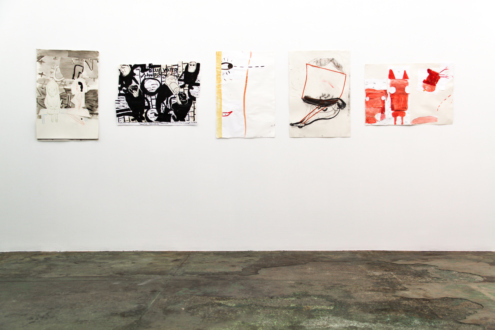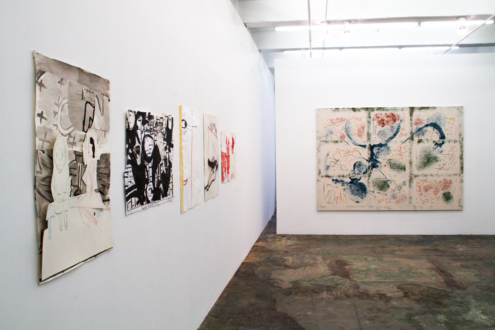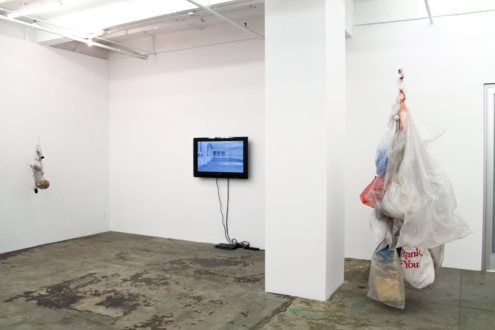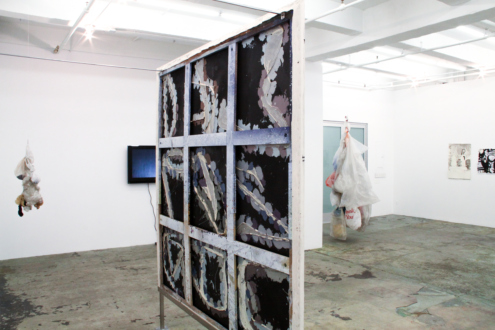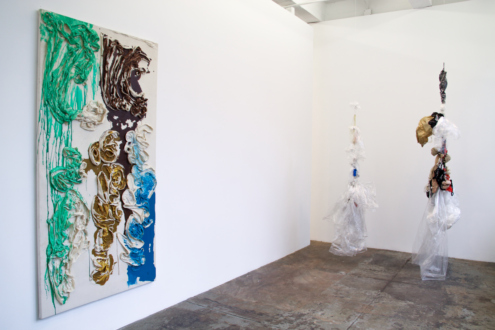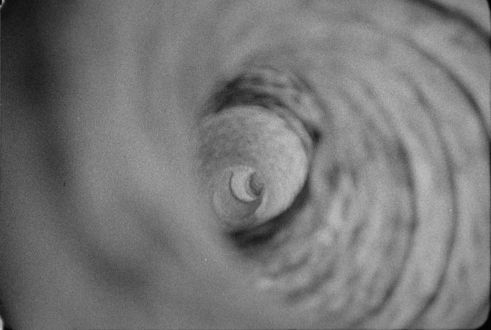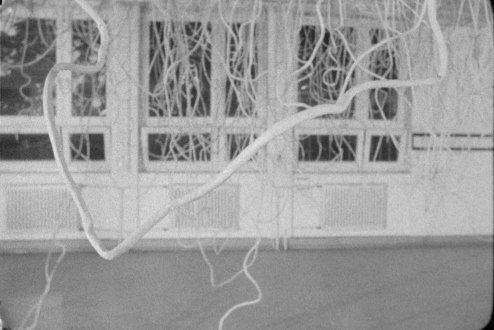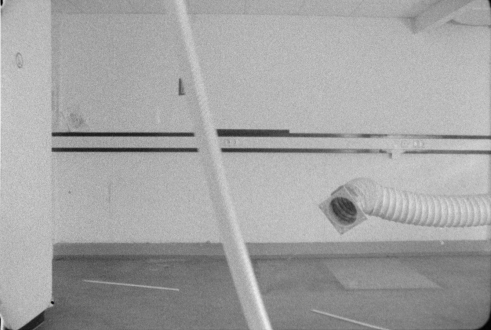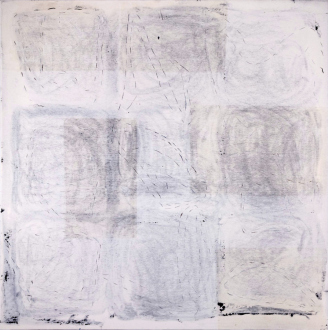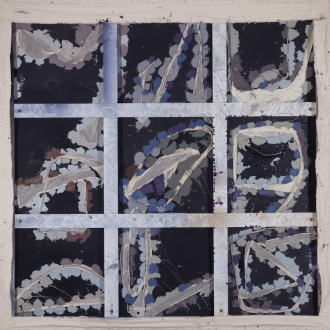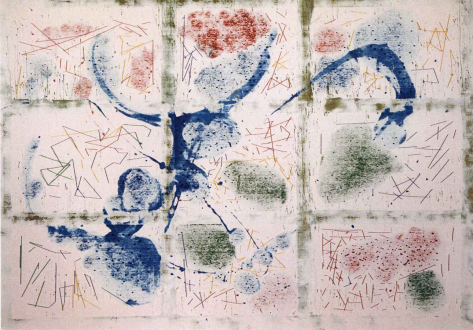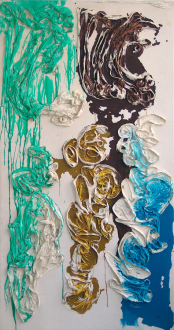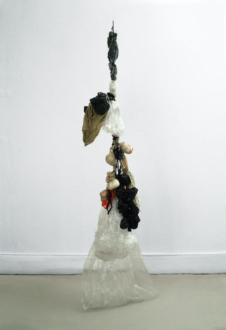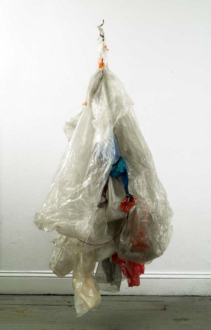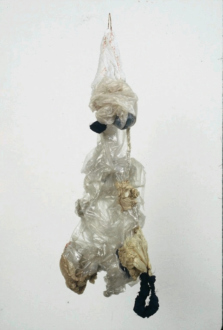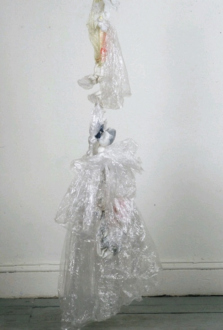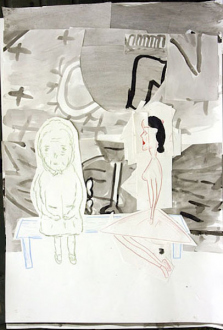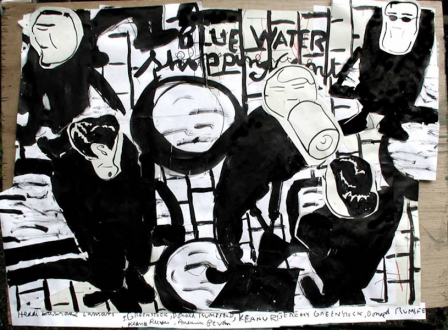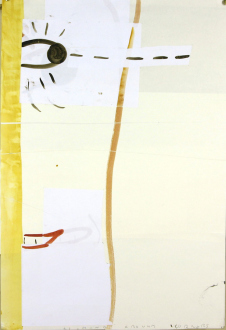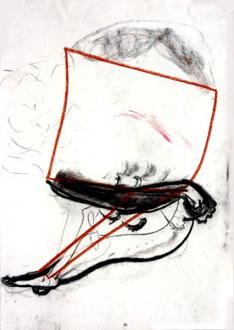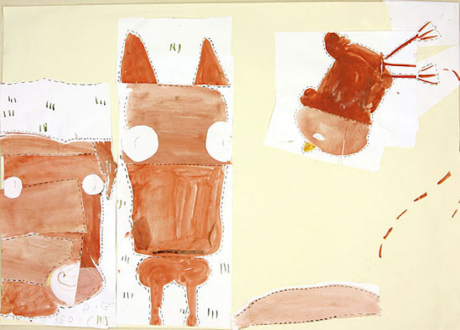Animate Matter – Pia Maria Martin, Dona Nelson, Richard Staub, Rose Wylie (Works)
Selected Works
Pia Maria Martin, Dona Nelson, Richard Staub, Rose Wylie
Animate Matter – Pia Maria Martin, Dona Nelson, Richard Staub, Rose Wylie Press Release
Thomas Erben Gallery is pleased to present Animate Matter, an exhibition of works by Pia Maria Martin, Dona Nelson, Richard Staub and Rose Wylie. Although from vastly different generations, all four artists are seemingly entrenched in their chosen medium, animating with their available tools and formal vocabularies the materiality and (art) historical references in order to engage the viewer in ways of looking at what ought to be inanimate objects. One can sense a pleasure for drawn-out process and aesthetic experimentation in the work of the participating artists.
In her stop-motion animation For Olga, Pia Maria Martin brings to life random objects strewn throughout an abandoned office building. Like in her earlier works, the empty rooms, closed off from public view, do not only become the site of production but source of inspiration for a play – a make-believe – taking place on the stage it offers. The eerie, while witty result is a guided tour through animated spaces, infusing the film with a personality rather than a narrative.
Dona Nelson’s paintings, many of which have moved off the wall into the space of the room, possess a similar quality of the animated inanimate object. The images moving across the face (and back) of her paintings – far from being purely material – are charged with imaginative implications that never supercede their factual material reality: the canvas, the paint, the stretcher, the glued cloth and stitched cord. Nelson’s paintings overrule the distinctions implied in the words: imagination / image / materiality.
The works assembled by Richard Staub repurpose the ordinary of everyday life in ways that simultaneously suggest fetish objects, Dior’s New Look, baroque tableaux and memento mori. Suspended from the ceiling or fixed to the wall, these combinations of packing tape, paper, foil, and plastic bags stand in for different pneuma. Their very materiality gives them gravity and evokes states of energy that extend from stasis to an errant dynamism. By gathering, spray painting, compressing and tearing, Staub gives his material an immediate presence, pinning his work to the viewer’s world.
British artist Rose Wylie captures in her drawings our preconceptions of the world by replacing them with childhood-like wonder. These could be hilarious and silly, or anxious and nightmarish – but always subjective, informal and direct. Her quirky drawings are richly associative, mixing numerous different and often clashing source materials that fuse ancient, modern and contemporary references into a bold and gutsy whole.
